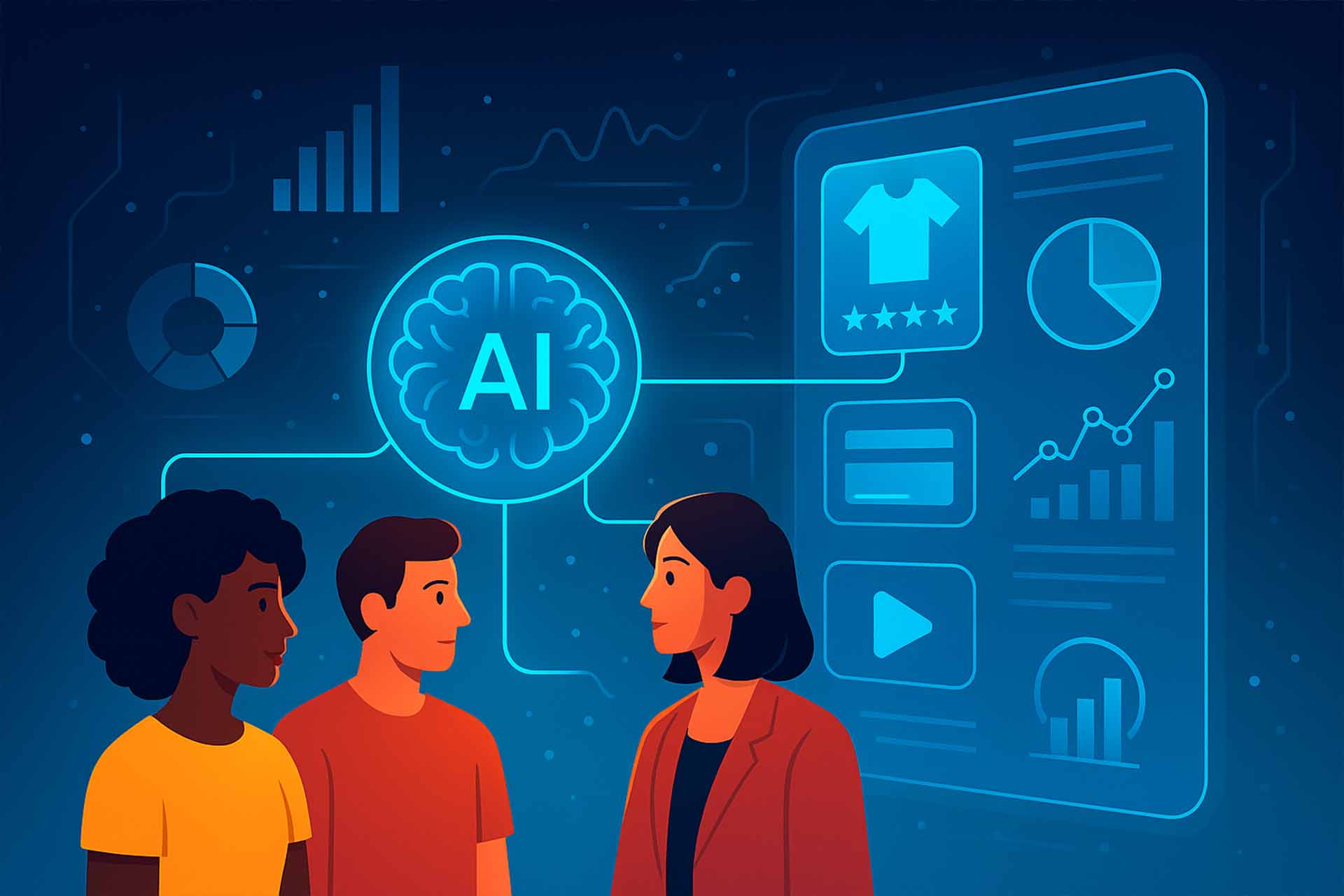
Hyper-Personalization with AI: Transform Customer Experience in 2025
Hyper-Personalization: Using AI to Deliver a Unique Experience for Every Customer
In today’s fast-evolving digital world, simple personalization is no longer enough. Customers now expect more than just seeing their name in an email or receiving generic product recommendations. This is where hyper-personalization comes in — the next generation of personalization powered by artificial intelligence (AI) and big data.
What is Hyper-Personalization?
Hyper-personalization goes far beyond addressing a customer by name. It’s about gaining a deep understanding of customer behaviors, preferences, needs, and even real-time moods, then delivering the right content, product, or service at the right time and on the right channel.
How AI Enables Hyper-Personalization
AI-driven algorithms analyze massive amounts of customer data across their digital journey, such as:
- Browsing history: pages visited, products viewed, time spent.
- Purchase history: previously bought items and abandoned cart products.
- Demographics: age, gender, location.
- Engagement behavior: email open rates, ad clicks, social media interactions.
- Real-time signals: current time of day, weather, browsing speed.
With these insights, AI can predict what customers need before they even ask and personalize their experience automatically.
Real-World Examples of Hyper-Personalization with AI
- E-commerce: Instead of showing what “others viewed,” AI can recommend products based on a customer’s exact purchase history and browsing habits. It can even trigger exclusive discounts for customers most likely to buy, rather than sending the same offers to everyone.
- Banking: AI can analyze a customer’s financial behavior and suggest tailored savings plans, loans, or investments. It can also send proactive alerts about overspending or notify clients of new investment opportunities.
- Entertainment: Streaming platforms like Netflix or Spotify lead the way, recommending shows, movies, or songs that align precisely with your tastes and past behavior.
- Digital Marketing: AI can generate dynamic emails where the content, images, and product recommendations change automatically based on each customer’s recent interactions.
Future Challenges of Hyper-Personalization
While hyper-personalization creates powerful opportunities, it also faces challenges — especially around privacy. Brands must be fully transparent about how they collect and use data, always requesting clear user consent.
As AI continues to evolve, hyper-personalization will shift from being a competitive advantage to becoming the new standard. Brands will stop asking, “What can we sell?” and start asking, “What does the customer truly need right now?”
Free Consultation
🚀 Ready to transform every customer interaction into a unique experience?
At Loop Media, our brand experts offer a free 30-minute strategy session to help you unlock the power of hyper-personalization with AI.
- Discover untapped opportunities in your customer data
- Get tailored recommendations for smarter personalization
- Learn how to measure results and boost ROI
- 📞 (+966) 53 692 8397
- 📧 Support@loop-media.co
- Visit our Contact Us page.
This article is available in Arabic. You can read the Arabic version [here].
 العربية
العربية


